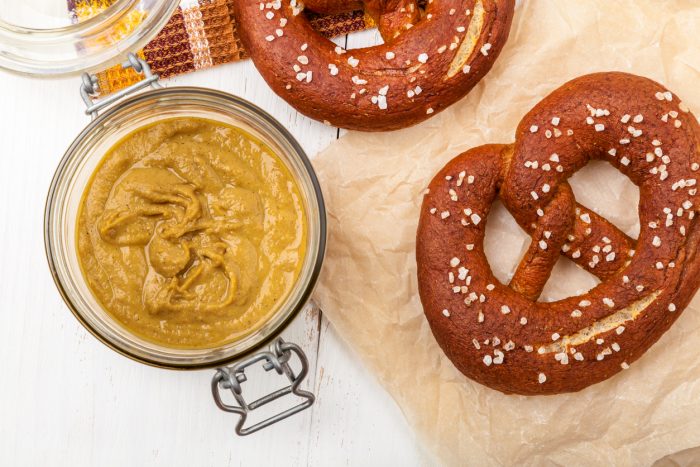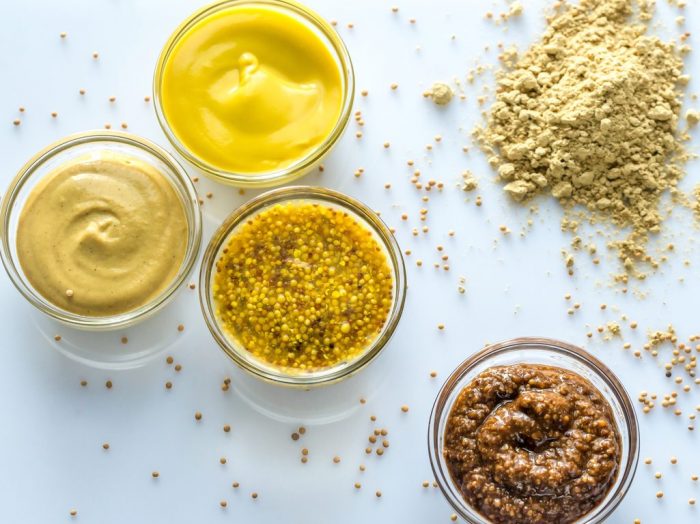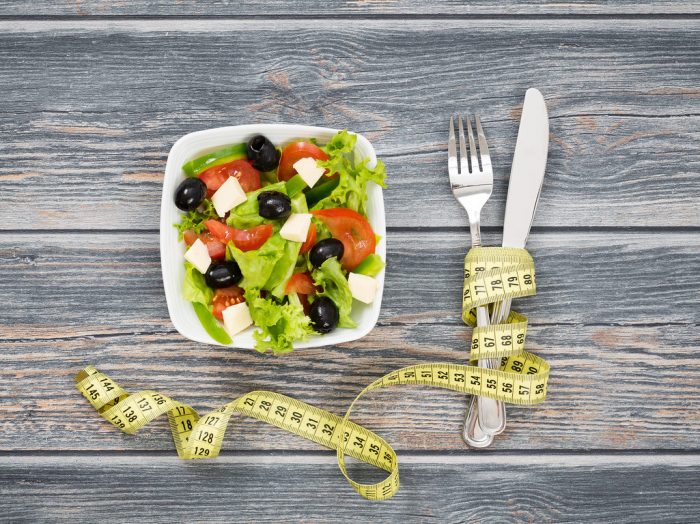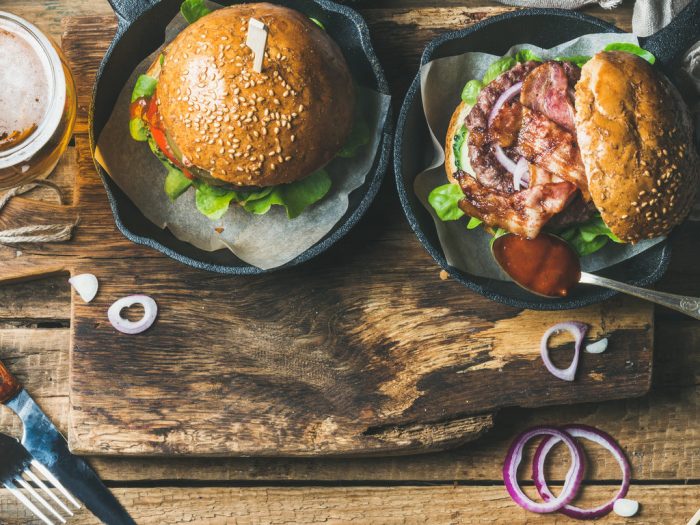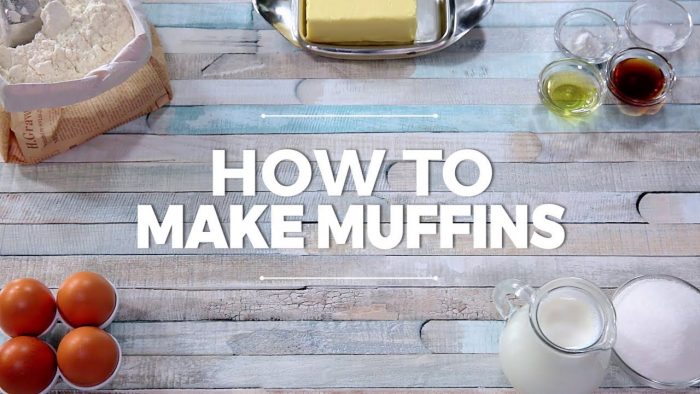Have you experimented with some mustard varieties and you’ve already chosen a favorite one? Find out how mustard is made, which are the most famous types and how to use them at their true potential.
You probably don’t know that much about mustard (and it’s understandable). You’ve experimented with a few types and you’ve probably already decided which one is your absolute favorite (I know mine is Dijon!). You enjoy it with sausages, in hot-dogs, add it to salad dressings, sauces, and dips. Your only criteria in choosing the mustard you use out of all the existing varieties is, probably, your taste. But let’s find out some more interesting things about mustard. You might want to try other different types after reading this!
Mustard is a condiment made from the seeds of a mustard plant. The whole, ground, cracked, or bruised mustard seeds are mixed with water, vinegar, lemon juice, wine, or other liquids, salt, and often other flavorings and spices, to create a paste or sauce ranging in color from bright yellow to dark brown. The taste of mustard ranges from sweet to spicy.
Mustard is one of the world’s oldest condiments. It was cultivated in the Indian Subcontinent, before the year 1800 BC. The Romans were probably the first who prepared and used mustard as a condiment. They mixed unfermented grape juice called ‘must’ with ground mustard seeds to make ‘burning must’, so-called mustum ardens – hence ‘must ard’, shortened to mustard, the name we’re familiar with these days.
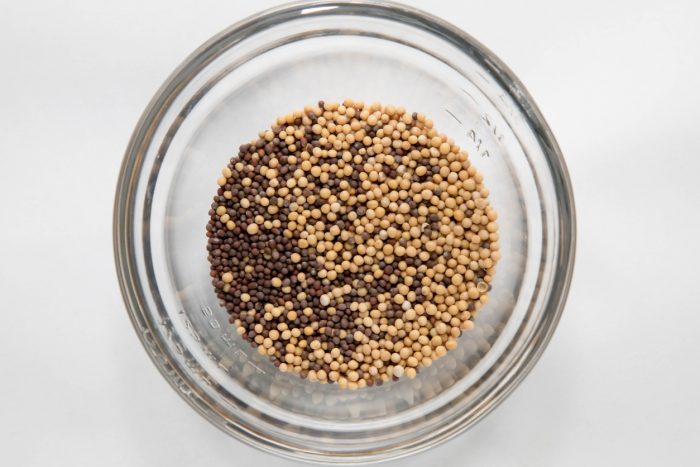
How mustard is made
The basic way of making mustard is to combine the ground seeds of the mustard plant with liquid. The mustard varieties depend on the seeds and type of liquid used in the combo.
There are three types of mustard plants: the white/yellow mustard (which have a less pungent flavor), black mustard and brown/Indian mustard (both with a more pungent flavor). White/yellow mustard seeds result into a mild paste, while brown and black seeds make a much hotter mustard.
The temperature of the water and concentration of acids – like vinegar – also determine the strength of a prepared mustard. The natural enzymes present in the mustard seeds will liberate pungent compounds from their dormant state only if they’re combined with liquid. The hotter the liquids are and the stronger the acid is, the more the intensity of the mustard paste is reduced. That means that hot mustard is made with cold water while using hot water leads to a milder condiment. Also, the more acidic the liquid, the slower this reaction will take place, and the longer the final heat will last. Mustards made with vinegar will have a long-lasting, slow burn, while those made with less acidic liquids like pure water, will be extremely pungent when freshly prepared, but lose that punch more quickly.
A short guide of mustard varieties
If you want a mild mustard with a longer shelf life, then choose mustard varieties made with yellow mustard seeds and plenty of vinegar. By contrary, if you like the hottest mustards, choose one that is made with black or brown mustard seeds and cold water. You should look for mustards with expiration dates over six months from the day you buy them.
It’s good to understand the differences between the many mustards on the shelves, so you can use the right type depending on your needs and recipes.
Yellow mustard
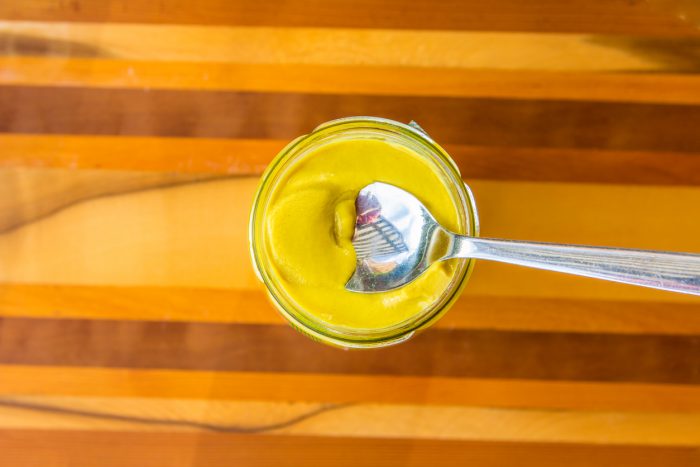
The most commonly used mustard in the United States is American mustard sold as ‘yellow mustard’, although most mustards are yellow. Its bright yellow color comes not only from the use of finely ground yellow mustard seeds but also from the use of turmeric powder. These two ingredients are mixed with vinegar and water, and sometimes a few other mild spices, to create a thick, squeezable sauce. Yellow mustard is usually used to top hot dogs, sandwiches, pretzels, and hamburgers, but also as an ingredient in many potato salads, barbecue sauces, marinades, and salad dressings.
Honey mustard
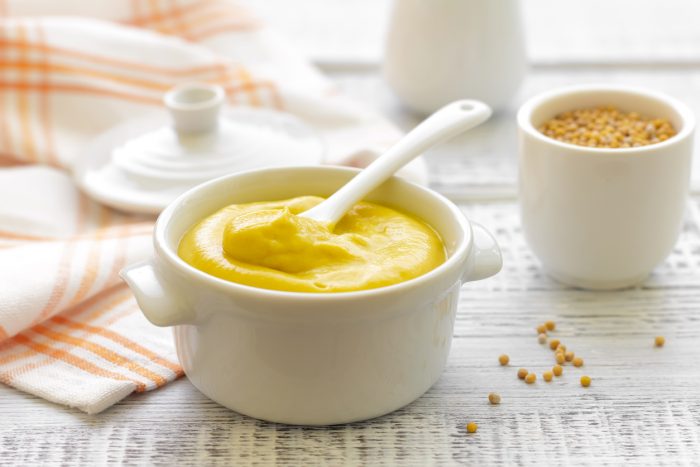
Honey mustard, as you can imagine, is a mixture of mustard and honey, typically mixed in a 1:1 ratio. If you decide to make it at home, you can adjust the ratio to your taste. For homemade honey mustard, they usually add yellow mustard, because it’s milder than other mustard varieties. Honey mustard goes best on sandwiches and as a dip for finger foods. Use it in sweet dressings, combined with vinegar, olive oil, salt, and pepper.
Spicy brown mustard
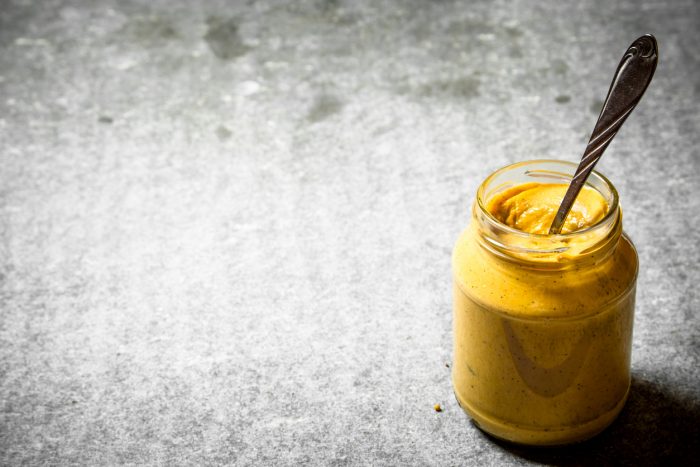
Spicy brown mustard is also very popular in the United States. They make it with brown mustard seeds which they grind coarsely and soak in less vinegar than a standard mustard. It’s spicier than yellow mustard and has a coarser texture.
You can find different varieties: mixed with spices like cinnamon, ginger, and nutmeg to give the mustard a slight earthy undertone, or with horseradish, which makes the product a little spicier than the classic spicy brown.
Also known as deli mustard, spicy brown sugar goes well in meat sandwiches, combined with pastrami, roast beef, and sausages.
Dijon mustard
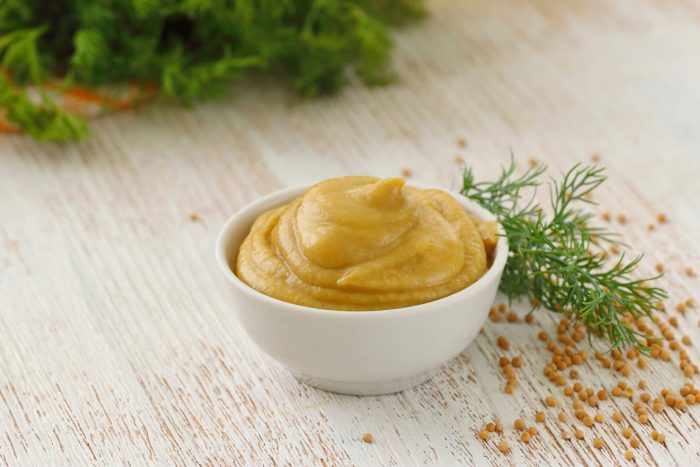
Jean Naigeon of Dijon, France, was the first one who made Dijon mustard, in 1856. He replaced the usual ingredient of vinegar with verjuice, which is the acidic ‘green’ juice of unripe grapes. Still, most mustards from Dijon today contain white wine rather than verjuice. Dijon mustard has a more pungent flavor.
Dijon mustard is not a protected food name. There are many mustard factories in Dijon, but they make most mustards described as ‘Dijon’ elsewhere. Add it to vinaigrettes, mayonnaise, and sauces.
Whole grain mustard
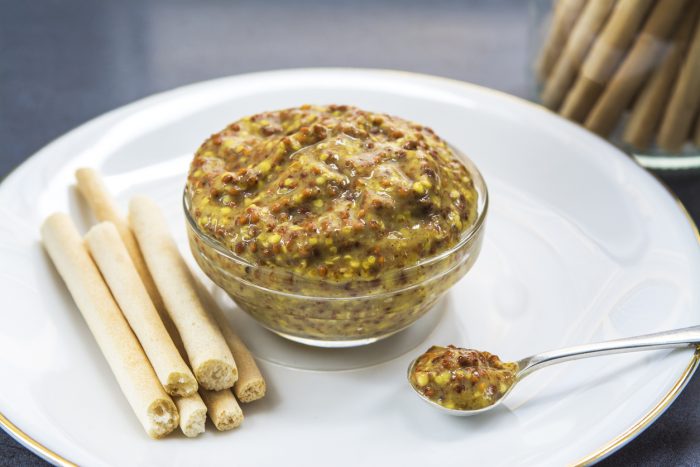
Whole grain mustard means using whole seeds which are mixed with other ingredients. Actually, they ground the seeds just enough to form a paste, but not all of them fully break down – a big part of them remain whole. The paste is thick and has a coarse texture. Usually, they use brown and black seeds instead of yellow. Some people don’t like the extra texture, but others love to bite whole seeds. You can use it in meat sandwiches, dressings or sauces.
Hot mustard
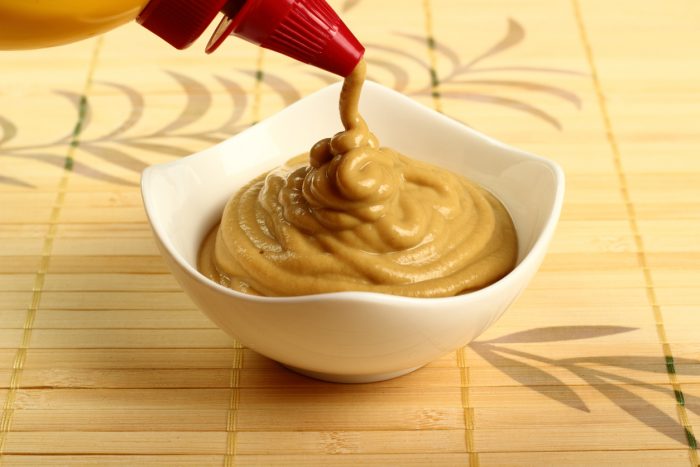
They use the term ‘hot mustard’ for those varieties prepared to bring out the natural piquancy of the mustard seeds. They make it with black or brown mustard seeds (because they’re more pungent than the white/yellow ones) and cold water (because cold water won’t reduce the mustard seed’s natural heat).
English mustard
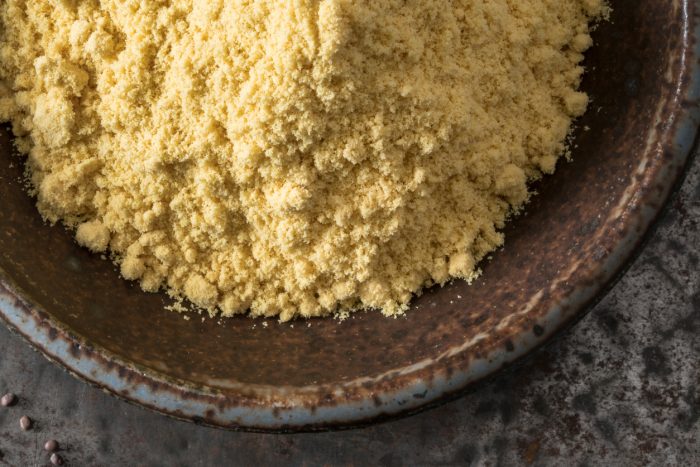
English mustard is one of the hottest mustard varieties in the world. Its color is bright-yellow and its consistency is thicker than the mild yellow American mustard. The most famous brand of English mustard is Colman’s, which first produced their variety in 1814 as a powder in their yellow tin. Now, you can find it bottled, but like any hot mustard, you should buy English mustard in powdered form and mix it with cold water about fifteen minutes prior to use, to unleash its full flavor and heat. It’s best for sandwiches, roasts, or sauces.
German mustard
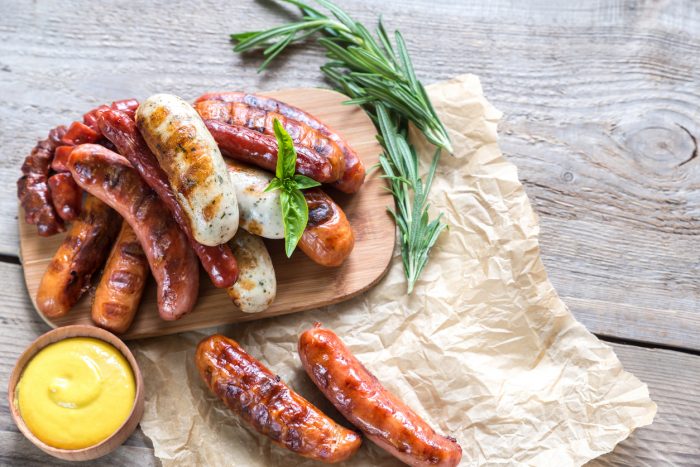
The Germans don’t have any mustard they refer as ‘German mustard’, in the way that the British do have and refer to an ‘English mustard’. But most German mustards are mild to hot, spicy or mildly sweet. German mustard can range from fine to coarse-ground, pale yellow to brown in color. Some German mustards also have extra ingredients, like horseradish, honey, brown sugar, or applesauce, to enrich their flavor. German mustard goes great with a grilled sausage or a hot soft pretzel.
Beer mustard and spirit mustard
Beer mustard uses beer instead of vinegar. Sometimes, they use beer in addition to vinegar. Because it has less acidity, beer mustard is spicier. Its taste also depends on the beer type. Mustard hides the taste of a mellow beer, but a fuller flavored beer (like a dark ale) adds some of its taste to the mustard paste.
Spirited mustards are mustard varieties made with alcoholic spirits, usually in addition to vinegar. Whiskeys, brandy, cognac, and bourbons are popular choices for spirit-based mustards. They all have deep flavors. They’re better as a dipping sauce, but you can also use them in recipes.
